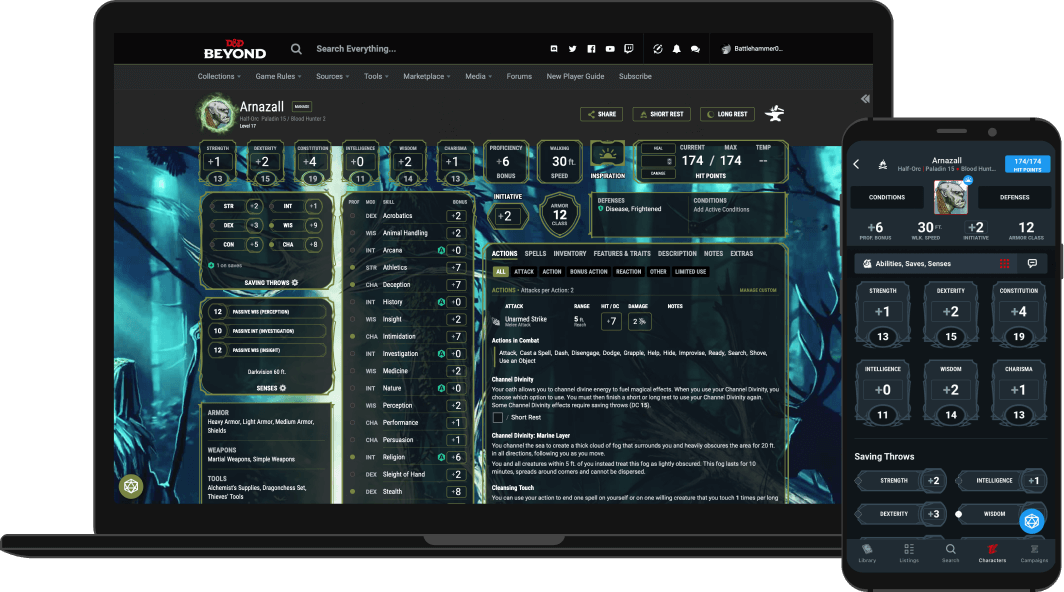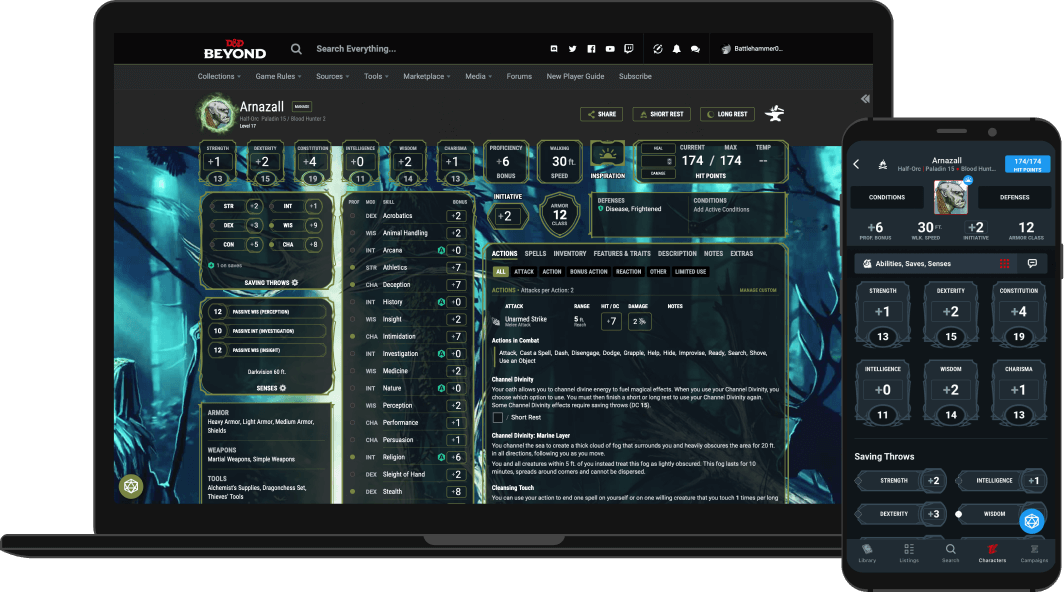The Dark Side of D&D Beyond
D&D Beyond’s tools are great. But they come with some unintended consequences that impact our creativity and play.

D&D Beyond’s tools are great. But they come with some unintended consequences that impact our creativity and play. All that convenience comes with a dark side.

D&D Beyond is a wildly successful set of tools first licensed and then purchased by Wizards of the Coast (WotC). It includes a character builder, web versions of all publications, an encounter builder, an initiative tracker, 2D VTT, dice rolling, and more—all integrated with moderate to good user experiences. If you were around during the days of the 4E tools (Silverlight, anyone?), D&D Beyond is light years into the future. The tools are awesome, accessible, and sticky. But they aren’t all lawful good.
Limits to Play Styles
The integrations between the tools are great—but they support a narrow play style. If you enjoy homebrew rules, as many GMs do, D&D Beyond may not support them, creating more work for the GM to play around the tool. Many optional rules published by WotC like proficiency dice, aren’t supported at all. In this case, the builder always assumes static proficiency so all of your proficient scores are wrong.
A paper (or PDF) character sheet filled with notes and numbers requires some work to understand. As such, it’s easier to think of your character in the world first—and to come back to the character sheet only when you need it. When that same character sheet does everything for you (like in Beyond), it’s easy to go on autopilot. “On my turn, I click here and the program will do the rest.” Your options, despite your best intentions, slowly morph into what’s clickable, limiting your creativity.
Sunk Costs and Sticky Wickets
If you or your players purchase licenses to access content on D&D Beyond, beware of the sunk-cost fallacy. It’s easy to feel that you need to stick with it simply because you’ve put money into it. But remember that you’re not buying gaming content. You’re buying a license to access gaming content. Unlike a book, you don’t own content in Beyond.
With how easy the tool makes the process (though not the art) of character creation, it’s become supremely difficult to convince players to not use it for a game. I did just this and making characters with books, pen, and paper was hard for folks who’d never done it. And it was only a matter of time before a player made a campaign on Beyond for everyone to put their characters in anyways.
A Magic Lost
When you build your character with Beyond, you miss out on the tactile experience of flipping through a book. You don’t take in the inspiring artwork. The serendipity of finding something else that you weren’t looking for is lost. While Beyond is about 1000x faster, it doesn’t provide that rich experience or innate intimate knowledge of your character.
The same rings true for game masters. Building encounters limits you to what’s available. Or adds significant work to use homebrew creatures. Using an alternate initiative system? Not very easily, if at all, in the encounter tracker. Ultimately, you disengage a bit. You might even get lazy and just start building encounters purely by budget in the builder, without starting with your world and the story. Again, you lose out on flipping through monster books, absorbing lore, and stumbling onto something better than you set out to find.
There’s no doubt D&D Beyond has streamlined character creation and other aspects of D&D like never before. The accessibility has brought the magic of Dungeons & Dragons to those who can’t solely rely on books alone. But for many in the hobby, there’s a dark side to that convenience. You lose flexibility, the magic of physical books, and risk feeling like you have to use their tools to play the game we know and love.
That last one simply isn’t true and it never will be.
Game on.
